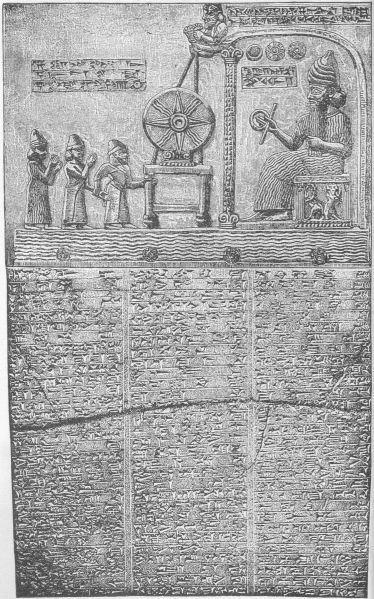E-text prepared by Thierry Alberto, Brownfox,
and the Project Gutenberg Online Distributed Proofreading Team
()
CHALDEA
FROM THE EARLIEST TIMES TO THE RISE OF ASSYRIA
(TREATED AS A GENERAL INTRODUCTION TO THE STUDYOF ANCIENT HISTORY)
BY
ZÉNAÏDE A. RAGOZIN
MEMBER OF THE "SOCIÉTÉ ETHNOLOGIQUE" OF PARIS; OF THE "AMERICANORIENTAL SOCIETY"; CORRESPONDING MEMBER OF THE "ATHÉNÉEORIENTAL" OF PARIS; AUTHOR OF "ASSYRIA," "MEDIA," ETC.
"He (Carlyle) says it is part of his creed that history ispoetry, could we tell it right."—Emerson.
FOURTH EDITION
London
T. FISHER UNWIN
PATERNOSTER SQUARE
NEW YORK: G. P. PUTNAM'S SONS
MDCCCXCIII
TO THE MEMBERS OF
THE CLASS,
IN LOVING REMEMBRANCE OF MANY HAPPY HOURS, THIS VOLUME AND THE FOLLOWINGONES ARE AFFECTIONATELY INSCRIBED BY THEIR FRIEND.
The Author.
Idlewild Plantation,
San Antonio.

CLASSIFIED CONTENTS.
INTRODUCTION.
| I. | |
| PAGE | |
Mesopotamia.—The Mounds.—The First Searchers | 1-18 |
| § 1. Complete destruction of Nineveh.—§§ 2-4. Xenophon and the"Retreat of the Ten Thousand." The Greeks pass the ruins ofCalah and Nineveh, and know them not.—§ 5. Alexander's passagethrough Mesopotamia.—§ 6. The Arab invasion and rule.—§ 7.Turkish rule and mismanagement.—§ 8. Peculiar naturalconditions of Mesopotamia.—§ 9. Actual desolate state of thecountry.—§ 10. The plains studded with Mounds. Their curiousaspect.—§ 11. Fragments of works of art amidst the rubbish.—§12. Indifference and superstition of the Turks and Arabs.—§13. Exclusive absorption of European scholars in ClassicalAntiquity.—§ 14. Forbidding aspect of the Mounds, comparedwith other ruins.—§ 15. Rich, the first explorer.—§ 16.Botta's work and want of success.—§ 17. Botta's greatdiscovery.—§ 18. Great sensation created by it.—§ 19.Layard's first expedition. | |
| II. | |
... BU KİTABI OKUMAK İÇİN ÜYE OLUN VEYA GİRİŞ YAPIN!Sitemize Üyelik ÜCRETSİZDİR! | |
